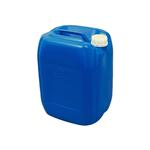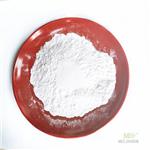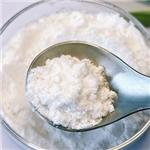- Heptanoic acid
-

- $5.00 / 25kg
-
2024-04-19
- CAS:111-14-8
- Min. Order: 1kg
- Purity: ≥95%
- Supply Ability: 5000mt/year
- Heptanoic acid
-

- $0.00 / 25KG
-
2023-08-18
- CAS:111-14-8
- Min. Order: 1KG
- Purity: 99%
- Supply Ability: 50000KG/month
- Heptanoic acid
-

- $20.00 / 1kg
-
2023-03-16
- CAS:111-14-8
- Min. Order: 1kg
- Purity: 99%
- Supply Ability: 5000 Ton
|
| | Heptanoic acid Chemical Properties |
| Melting point | -10.5 °C (lit.) | | Boiling point | 223 °C (lit.) | | density | 0.918 g/mL at 25 °C (lit.) | | vapor density | 4.5 (vs air) | | vapor pressure | <0.1 mm Hg ( 20 °C) | | FEMA | 3348 | HEPTANOIC ACID | | refractive index | n20/D 1.4221(lit.) | | Fp | >230 °F | | storage temp. | Store below +30°C. | | solubility | water: soluble0.2419 g/100ml at 15°C | | pka | 4.89(at 25℃) | | form | Powder | | color | White to off-white | | Odor | at 1.00 % in propylene glycol. rancid sour cheesy sweat | | Odor Type | cheesy | | explosive limit | 10.1% | | Water Solubility | 0.24 g/100 mL (15 ºC) | | Merck | 14,4660 | | JECFA Number | 96 | | BRN | 1744723 | | Dielectric constant | 2.5(22℃) | | Stability: | Stable. Incompatible with strong oxidizing agents, bases, reducing agents. Combustible. Protect from light. | | InChIKey | MNWFXJYAOYHMED-UHFFFAOYSA-N | | LogP | 2.54 at 20℃ | | CAS DataBase Reference | 111-14-8(CAS DataBase Reference) | | NIST Chemistry Reference | Heptanoic acid(111-14-8) | | EPA Substance Registry System | Heptanoic acid (111-14-8) |
| Hazard Codes | C | | Risk Statements | 34 | | Safety Statements | 26-28-36/37/39-45-28A | | RIDADR | UN 3265 8/PG 3 | | WGK Germany | 1 | | RTECS | MJ1575000 | | Autoignition Temperature | 380 °C | | TSCA | Yes | | HS Code | 2915 90 70 | | HazardClass | 8 | | PackingGroup | III | | Hazardous Substances Data | 111-14-8(Hazardous Substances Data) | | Toxicity | LD50 i.v. in mice: 1200±56 mg/kg (Or, Wretlind) |
| | Heptanoic acid Usage And Synthesis |
| Description | As an organic compound, heptanoic acid is a seven-carbon linear chain saturated fatty acid with an unpleasant, rancid and pungent odor, which is commonly used as a chemical intermediate in the synthesis of esters for products, such as ethyl heptanoate, that are used in fragrances and artificial flavors. It is also applied in cosmetics for the production of emollients, skin conditioning agents as well as viscosity controlling agents. Besides, heptanoic acid can also act as a industrial lubricant applied in the fields of aviation, refrigeration, automobile, etc. due to its low viscosity at low temperature and low volatility at high temperature. Moreover, the good anti-corrosion property of heptanoic acid results in the usage of metalworking fluids, industrial water-based refrigerants and anti-corrosion additive for paint. Heptanoic acid is also applied to esterify steroids in the field of pharmaceutical to produce drugs such as testosterone enanthate, trenbolone enanthate, drostanolone enanthate, methenolone enanthate and it is also one of numerous additives in cigarettes.
| | References | https://en.wikipedia.org/wiki/Heptanoic_acid
https://pubchem.ncbi.nlm.nih.gov/compound/8094#section=Top
http://www.arkema.com/en/products/product-finder/product-viewer/Oleris-n-Heptanoic-acid/
| | Description | Heptanoic acid, also called enanthic acid, is an organic compound composed of a seven - carbon chain terminating in a carboxylic acid. It is an oily liquid with an unpleasant, rancid odor. It contributes to the odor of some rancid oils. It is slightly soluble in water, but very soluble in ethanol and ether. | | Chemical Properties | Heptanoic acid has a disagreeable rancid odor. The spectroscopically pure acid exhibits a faint tallow-like odor. Heptanoic acid
may be prepared by oxidation of heptaldehyde with potassium
permanganate in diluted sulfuric acid. | | Occurrence | Reported as occurring naturally in calamus, hops, Acacia dealbata, and Japanese peppermint and violet leaves; its presence in rancid oils has been observed Also reported found in passion fruit, mandarin orange peel oil, guava, apple, banana, grapes, papaya, raspberry, strawberry, kiwi, baked potato, sauerkraut, tomato, breads, cheeses, butter, milk, fsh, fsh oil, meats, chicken fat, pork fat, hop oil, beer, cognac, brandy, rum, grape wines, sherry, whiskies, sake, peated malt, cocoa, coffee, tea, soy protein, peanuts, pecans, coconut, beans, mushroom, fenugreek, mango, fgs, licorice, corn oil, shrimps, scallops and other sources | | Uses | There are two major uses for heptanoic acid. One is in vinyl plasticizers that are used primarily in the automotive market.This market is expected to grow 3 to 4% per year with GNP.The second is in synthetic lubricants, where heptanoic acid is used in polyol esters.The market for polyol esters is primarily for use in commercial and military jet turbine lubricants.There is a small market for these esters in the automotive lubricant area, but there has been limited acceptance of these products by automakers and the public.The growth of the polyol ester market is expected to track GNP, unless automakers change to support synthetics or unless there is an elevation of military activity.
The use of heptanoic acid in high-water metalworking fluids has grown in excess of 20% over the last several years.The amount of acid used in these products is small; therefore, a dramatic change from the traditional oil-based fluids would be required before there would be significant market impact. | | Uses | Heptanoic acid is used as an organic building block for the synthesis of a variety of chemical compounds. It is involved in the esterification of steroids and used in the preparation of active pharmaceutical ingredients such as trenbolone enanthate, testosterone enanthate, drostanolone enanthate and methenolone enanthate. It is also used as an internal standard during gas chromatography analysis of the butyl esters of volatile acids. Its ester derivatives are used in the fragrance and flavor industries as well as cosmetics and industrial lubricants in aviation, refrigeration and automobile. It is used to prepare sodium heptanoate, which is used as a corrosion inhibitor. | | Definition | ChEBI: A C7, straight-chain fatty acid that contributes to the odour of some rancid oils. Used in the preparation of esters for the fragrance industry, and as an additive in cigarettes. | | Production Methods | The methyl ester of ricinoleic acid, obtained from castor bean oil is the main commercial precursor to heptanoic acid. It is hydrolyzed to the methyl ester of [[undecenoic acid]] and heptanal, which is then air oxidized to the carboxylic acid. Approximately 20,000 tons were consumed in Europe and US in 1980.
Ricinoleic acid is the main precursor to heptanoic acid. Heptanoic acid is used in the preparation of esters, such as ethyl heptanoate, which are used in fragrances and as artificial flavors. Heptanoic acid is used to esterify steroids in the preparation of drugs such as as testosterone enanthate, trenbolone enanthate, drostanolone enanthate and methenolone enanthate (Primobolan). It is also one of many additives in cigarettes. | | Preparation | By oxidation of heptaldehyde with potassium permanganate in diluted sulfuric acid. | | Taste threshold values | Taste characteristics at 5 ppm: waxy, cheesy, fruity, dirty and fatty. | | Synthesis Reference(s) | Tetrahedron Letters, 21, p. 2181, 1980 DOI: 10.1016/S0040-4039(00)78992-1
The Journal of Organic Chemistry, 58, p. 4745, 1993 DOI: 10.1021/jo00069a047 | | General Description | A colorless liquid with a pungent odor. Less dense than water and poorly soluble in water. Hence floats on water. Very corrosive. Contact may likely burn skin, eyes, and mucous membranes. May be toxic by ingestion, inhalation and skin absorption. Flash point near 200°F. | | Air & Water Reactions | Slightly soluble in water. | | Reactivity Profile | Heptanoic acid reacts exothermically with bases. Can react, particularly if moist, with active metals to form gaseous hydrogen and a metal salt. Such reactions are slow if the acid remains dry. Corrodes or dissolves iron, steel, and aluminum parts and containers under ordinary conditions. Reacts with cyanide salts to generate gaseous hydrogen cyanide, particuarly if moist. May generate flammable and/or toxic gases with diazo compounds, dithiocarbamates, isocyanates, mercaptans, nitrides, and sulfides. Reacts with sulfites, nitrites, thiosulfates (to give H2S and SO3), dithionites (SO2), to generate flammable and/or toxic gases and heat. Reacts exothermically with carbonates and bicarbonates to generate a harmless gas (carbon dioxide). Can be oxidized exothermically by strong oxidizing agents and reduced exothermically by strong reducing agents. A wide variety of products is possible. May initiate polymerization reactions; may catalyze chemical reactions. | | Hazard | Combustible. | | Health Hazard | Harmful if swallowed, inhaled, or absorbed through skin. Extremely destructive to mucous membranes, upper respiratory tract, skin, and eyes. Inhalation may be fatal as a result of spasm, inflammation and edema of the larynx and bronchi, chemical pneumonitis, and pulmonary edema. Symptoms of exposure may include burning sensation, coughing, wheezing, laryngitis, shortness of breath, headache, nausea, and vomiting. | | Fire Hazard | Heptanoic acid is probably combustible. |
| | Heptanoic acid Preparation Products And Raw materials |
|